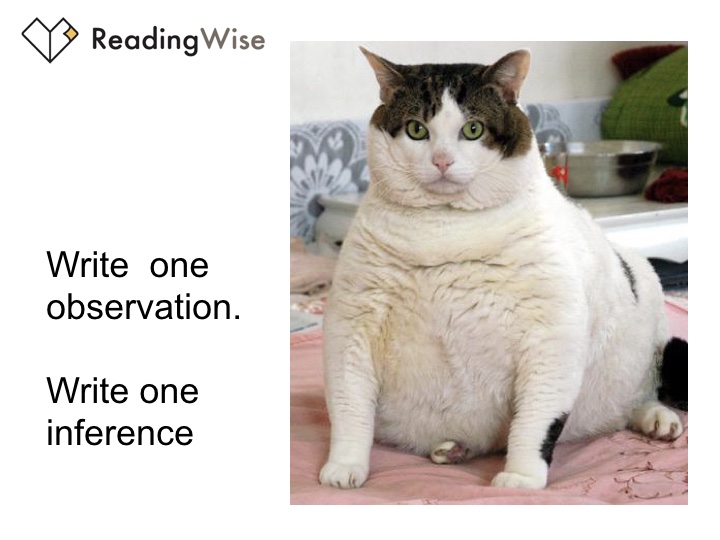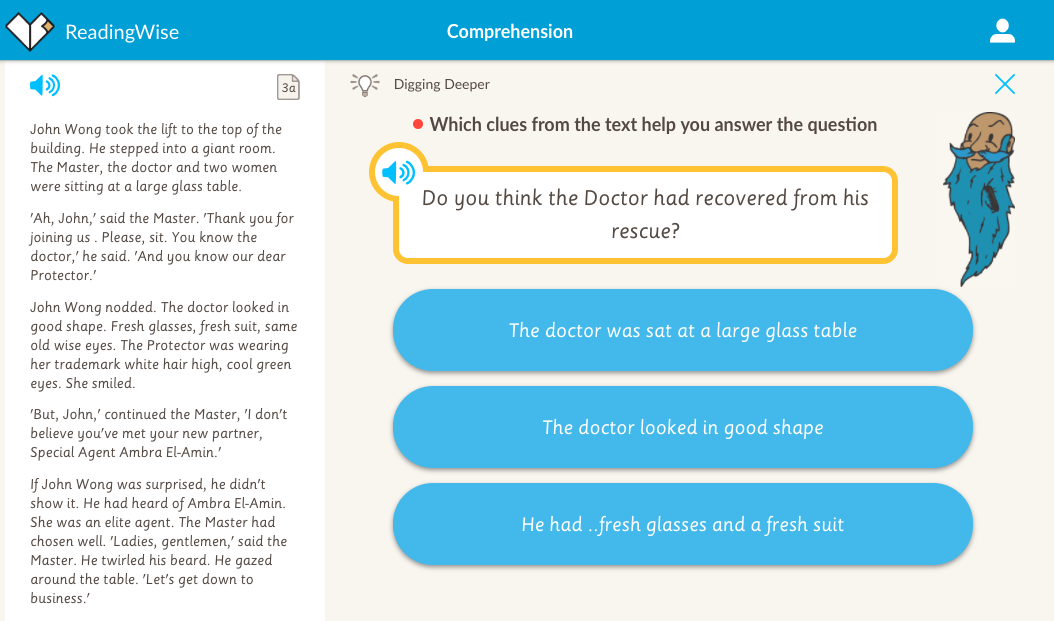
Questioning is key to comprehension. Questions help to show that a learner has engaged with a text and understood what it contains. But how do we know that a learner isn’t just remembering facts and details? How do we teach them to actively engage in what they are reading? We need to ask them inferential questions.
Observing versus inferring
What is inference? Our team often uses this example in training to show the difference between an observation and an inference:

Observation: The cat is overweight.
Inference: The cat's owner feeds it too much.
A 2008 report by the National Foundation for Educational Research considered inference to be "a high profile skill", one particularly important for learners in Key Stages 2 and 3 to learn. In being asked inferential questions “readers learn how to make connections between given and implied information. It helps them examine their thinking and reasoning so they can verbalise how they arrived at their assumptions and conclusions” (Richards and Anderson, p292, 2003). But whilst inference is a natural process, children need to be taught and encouraged to do so.
How do you know?
‘How do you know?’ is a great example of an inferential question. It encourages learners to think more about their answer, to question how they may have drawn conclusions from a text. Here’s a simple way to teach inference skills in the classroom:
- Have your learners to read a short text.
- Ask them a question about what has happened.
- Then ask then 'How do you know this?'
Remember, with inferential questions, the answer isn’t always right there. Learners must look for clues in the text. They may need to draw on their own experiences and memory to piece together the meaning. There is no right or wrong answer.
Digging Deeper for the Red Stone of Calcutta
The Digging Deeper mini-skill models and teaches these skills. After reading a chapter from the story, learners are then asked questions that require them to look for clues and information in the text that might not be so explicit.

In this example, the Doctor has recently been rescued from the villains. Our guide, The Master, poses the question ‘Do you think the Doctor had recovered from his rescue? How do you know this?’ The story itself doesn’t state this explicitly – learners are asked to infer this information from clues contained elsewhere within the text.
The programme further models how to infer by offering up three potential options, one of which is incorrect. The text itself doesn’t state that the Doctor has recovered – it implies this by telling the reader that ‘he looked in good shape’ and ‘he had…fresh glasses and a fresh suit’.
Upon selecting one of the correct options, learners are then asked to select the sentence where these clues can be found.
What do you think?
What do you think about Digging Deeper? How do you teach inference in your classroom?
If you'd like to discuss using ReadingWise to empower your struggling comprehenders, you might like to arrange a demo with our friendly team. Demos are quick, informative and fit with your schedule. So far we've reached many thousands of learners and would love to explore working with you, if it might help more children read.
References & further reading
- Richards, J.C. and Anderson, N.A. (2003). 'How do you know: a strategy to help emergent readers make inferences', The Reading Teacher, 292.
- Kispal, A. (2008). Effective teaching of Inference Skills for Reading: Literature Review, 24.








